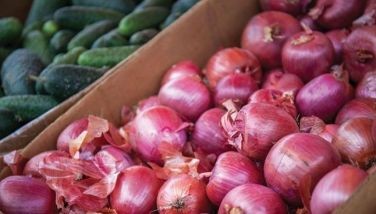Meat importers want tariff on pork offal maintained

MANILA, Philippines - The Meat Importers and Traders Association (MITA) are asking the Department of Agriculture (DA) to keep the tariff on pork offal at its present level.
In a talk with reporters, MITA president Jesus C. Cham said raising the duty on pork offals, which currently stands at five percent, could raise prices of processed food products.
“If you increase the tariff on pork offals, dalawa ang tatamaan. One is the consumers who directly consume pork offal, and second are the meat processors who use (pork) skin and fat to process into hotdogs and meat loaf. These processed food products are cheap protein sources for the poor,” Cham pointed out.
Pork offals include pork mask, cheeks, lips, liver, intestines and other parts not normally used in other countries.
Cham said poor Filipinos who subsist on $1 a day would be hit hardest if pork offal becomes more expensive. He said poor Filipinos, cannot afford fresh pork and chicken and instead rely on pork offal for their protein source.
According to Cham, imported pork offal costs only about $1 a kilo while fresh pork costs around $4 a kilo and chicken $3 a kilo. These prices “are simply beyond their reach,” Cham said.
But local hog growers are complaining about the sudden rise in the supply of pork offal, saying this is competing with locally produced pork.
According to Bureau of Animal Industry (BAI) data, shipments of pork offals have amounted to 48.45 million kilograms or 48,450 metric tons (MT) as of Nov. 18, surpassing the total shipments of pork offal into the Philippines in 2009 of almost 29 million kilograms or 29,000 MT.
The Philippines’ major sources of pork offal are the United States and Canada.
The DA noted that pork by products are treated as “waste” and are not usually consumed in countries where these products are sourced.
Here in the Philippines, pig liver, head, cheeks, and ears are used in making a popular dish called “sisig.”
The government does not limit the volume of offal that can enter the Philippines.
“The Philippines joined the WTO 15 years ago. Since then, we have opened our market to the world. Importers and exporters of other countries have been able to introduce more products in the market place but our local producers have stood still,” said Cham.
- Latest
- Trending





























